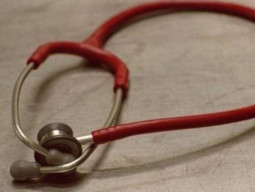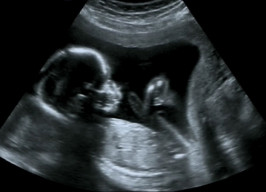
ISLAMABAD: The Ministry of National Health Services, Regulations and Coordination [NHS] on Monday received a nod from the Pakistan Electronic Media Regulatory Authority [PEMRA] as well as national TV and radio stations for broadcasting public service messages.
The agreement is in line with the public service message ruling within the [PEMRA] Ordinance, Section 20 (e) Act 2007 [Amendment], Clause 9, Schedule C of the Pemra Rules 2009. The ordinance obliges licensees of TV stations to allocate up to 10 per cent of their air-time to public service messages, including priority health and social welfare programmes delivered to communities in Pakistan.
The agreement -- under which all national TV and FM radio stations in the country will run priority tobacco control messages -- comes after correspondence between the NHS ministry and the Pemra earlier this year.
Dozens of health professionals join petition to PM
Minister of State for National Health Services Saira Afzal Tarar said, “This is a historic moment where the national media networks will be working with the government to raise awareness of critical health issues aimed at reducing the considerable burden of death and disease caused by tobacco which results in high rates of cancers, heart disease, chronic obstructive pulmonary diseases, diabetes and strokes. Through the delivery of these messages, the media will be giving back to the community through their corporate social responsibility.”
The initial pilot communication campaign to be launched on all stations is called ‘Sponge’. The public service announcement had already been run on national channels through a paid media plan in 2016. The announcement was one of the most powerful tobacco control messages ever made, having been successfully pre-tested in the region and now used in health campaigns in more than 20 countries globally.
Tobacco Control Cell [TCC] Director Muhammad Waqas Tarar stated, “The TCC is very pleased to see that tobacco control messages have been given priority with the first pilot campaign for the public service message ruling, given the considerable and rising health care costs to the community from tobacco-related diseases. We hope that as a result of monitoring of this campaign, we will be able to show the Supreme Court that national media in the country are indeed acting in good faith in supporting the public by delivering these important health messages.”
NA Panel: Health ministry working to regulate medical fees
The Sponge campaign spots will run on all stations in the lead-up to the World No Tobacco Day on May 31. During this time, it is expected that thousands of TV and radio spots will be aired during prime time and off-peak periods.
Following review of the compliance report by Pemra and NHS ministry, a number of future campaigns are already being planned to tackle the scourge of tobacco and other non-communicable diseases [NCD] risk factors given the enormous health care costs and productivity losses to the economy from NCD.
The UNODC Country Report for Pakistan 2012-13 identified that Pakistan has at least 20 million adult smokers. The Global Adult Tobacco Survey Report of WHO found that adult average smokers smoked 4,500 cigarettes per year with the total number of sticks consumed at 90 billion. Although, smokers in Pakistan are aware that smoking causes harm, too few are currently translating this into an intention to quit. Graphic campaigns like Sponge transmitted as part of the PSM ruling will show the specific harms of tobacco use in a powerful way, and that helps to encourage smoking cessation and deter youth from starting tobacco use.



































































COMMENTS
Comments are moderated and generally will be posted if they are on-topic and not abusive.
For more information, please see our Comments FAQ